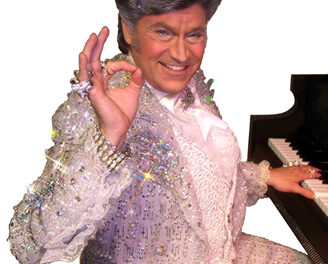The Lyricosa Quartet performed a well-attended concert Sunday afternoon in the intimate piano showroom at the Piedmont Music Center in Winston-Salem, as part of Music Carolina’s Summerfest. The program featured three treasures from the string quartet literature by three innovative and progressive composers: Joseph Haydn (Austria, 1732-1809), Ludwig van Beethoven (Germany, 1770-1827) and Anton Webern (Austria 1883-1945).
The Lyricosa Quartet – Carol Chung and Lucy Greenleaf (violins), Simon Ertz (viola), and Rosalind Leavell (cello) – formed in the spring of 2018; it is based in Raleigh, North Carolina. All four are active musicians in the Triangle and beyond.
Haydn’s six Op. 20 string quartets (1772) won him the nickname the “Father of the String Quartet.” Indeed, these compositions set the path for writing quartets into the foreseeable future. (Just for the record, Haydn is also known as the “Father of the Symphony.”) First on the program was Op. 20, No. 2 in the sunny key of C.
The opening Moderato was taken at a nice clip, and the first melody, given to the cello, presented a cheery disposition. That tune was shared more or less equally among all four musicians. A stormy section appears in the middle, and the cute, unexpected breaks in the flow add to the humor of the piece. The communication between the four resulted in impressive dynamic contrasts.
The Adagio begins with a dramatic unison from all four (a foreshadowing of the upcoming Beethoven?). This is juxtaposed with melodies from cello and violins over a pulsating accompaniment. The third movement proceeds without a pause.
The Minuet has been likened to a bird, and the chirpy first violin line certainly fills the bill. The Trio, cast in a minor mode, provides the cello (played strongly here and throughout by Leavell) gets most of the action until dramatic unison lines grab the listener’s attention. The finale is a tour-de-force of individual lines, and each member of the quartet took the spotlight when it was their turn, with the others appropriately becoming the accompaniment. Again, as in the first movement, the energy of the quartet’s playing was ever-present.
The music of Anton Webern is justly lauded (and by some, despised) for being penned by one of the premier atonal composers of the 20th century. However, his nine-minute “Langsamer Satz” (“Slow Movement,” dating from 1905), is written in a late Romantic style.
Sumptuous melodies and rich harmonies, passionately played by the ensemble, caught the highly charged score, which was written by the young Webern after a hike in the mountains with his wife-to-be. To be sure, there were contrasting ideas: unison outbreaks, abrupt pauses, special effects with mutes and pizzicato accompaniments. The piece ends gently, and the quartet provided the soft landing with sincere sensitivity.
Little needs to be said about Ludwig van Beethoven, whose output spans the transition between the Classical and Romantic eras; his music is some of the most performed in classical music repertoire. His Opus 131 in C-sharp minor, which was the composer’s favorite, breaks away from the traditional four-movement form, with seven movements played without a break. Schubert remarked, “What is there for us to write after this?”
The opening Fugue is a slow and serious affair: many writers talk about the sadness that the music evokes. Richard Wagner declared that it “reveals the most melancholy sentiment expressed in music.” This is an internal sadness, and the Lyricosa’s playing perfectly caught that sentiment.
The second movement, a delicate folk-like dance, breaks from the heaviness of the first movement and provides a good respite. The short third movement really functions as an introduction to the fourth, a theme with six variations. This movement, the longest of the seven, generously gives important material to each player, and each made the music sing. This is a complex work, as it is not necessarily the opening melody that undergoes variation. Instead, rhythms, tempos, changes in character are all part of the variation process.
A fast scherzo follows, teeming with energy and humor. The players frolicked through the fun score. A trio section that begins with all four playing in unison appears a couple of times, providing contrast. The slow, solemn sixth movement serves both as a foil to the previous lark as well as an introduction to the Allegro finale.
The last movement returns the home key of C-sharp minor and contains many contrasting sections: a stop and start opening unison theme followed by jerky, galloping rhythms. Later, lyrical lines are traded throughout the ensemble and a motive reminiscent of the opening fugue subject is heard.
The superb playing by the ensemble and the commitment to the score was thrilling. The crowd was justly enthusiastic, providing rousing applause for the fine musicianship. This chamber music concert made for a satisfying Sunday afternoon.
Music Carolina Summerfest concludes with one final performance: Dmitri Vorobiev, piano, on Wednesday August 30.











